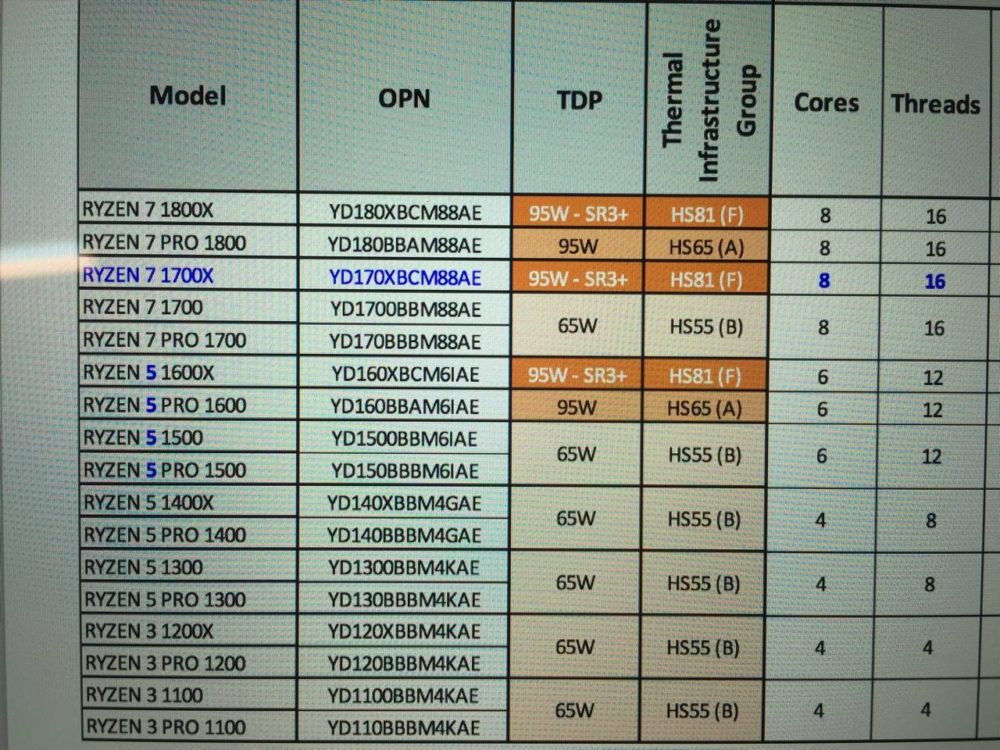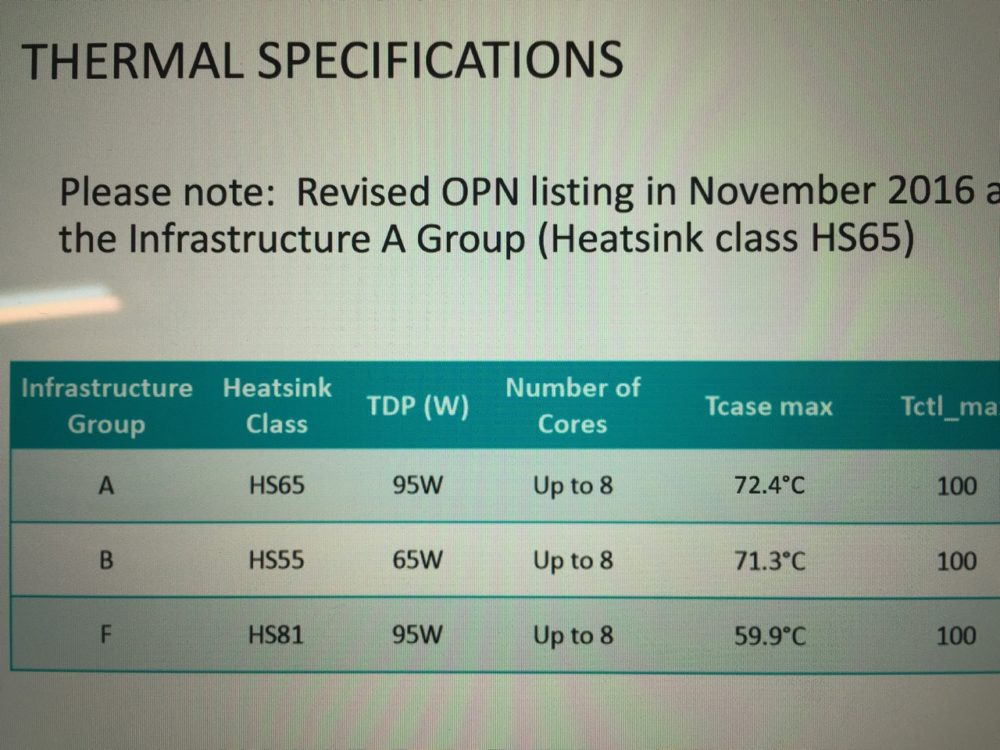digitalwanderer
Legend
Shhhh! I wanted him to think that Raja was just REALLY passionate about the Ryzen!
I feel like this post needs some more attention.http://pc.watch.impress.co.jp/docs/column/kaigai/1043349.html
from everyone fav Japanese man, new ZEN details from ISSCC



The Bullet Physics library it is testing similarly under performs on Apple's A7 and newer, despite those being otherwise being very capable cores.Looking good except 2 benchmarks: Prime numbers and Physics.. but looking at it, i really think that thoses 2 scores have bugged. ( looking the nature of both benchmarks, i dont see why it will be so low ).
The image is a photoshopped one ( not quite sure about the message behind anyway ).Original image with Raja about the new AMD coolers for Ryzen


If AMD has really pulled off smaller cores, similar clocks, similar IPC & similar TDP vs Intel despite weaker process tech that's a hell of a comeback!
https://videocardz.com/65892/amd-ryzen-7-1800x-1700x-and-ryzen-5-1600x-will-require-special-coolersProbably the most interesting part of this leak is the existence of two TDP levels for the whole stack of Ryzen CPUs. No matter if we take Ryzen 3 1100 or Ryzen 7 1700, both will have a TDP at 65W. However, it’s important to note that TDP does not stand for power consumption, as TDP stands for Thermal Design Power.
Three processors: Ryzen 7 1800X, Ryzen 7 1700X and Ryzen 5 1600X will not only have 95W TDP by specs, but also a special kind of cooler as a requirement (HS81). According to the leaked datasheet, this cooler will ensure that the temperature will not exceed 60C (in most cases). This, as a result, should increase the overclocking potential thanks to new technology called Extended Frequency Range (XFR), which basically allows clock speeds to scale with cooling solutions, without a requirement of user intervention. What we don’t know is whether this technology will be enabled just for the SKUs with the “X”, or for other models as well.


##1066 10-11-10 (18.7ns)
CPU Mark This Computer 9230
Integer Math This Computer 19408
Floating Point Math This Computer 8121
Prime Numbers This Computer 19.8
Extended Instructions (SSE) This Computer 225.8
Compression This Computer 14193
Encryption This Computer 2024
Physics This Computer 359.7
Sorting This Computer 8723
CPU Single Threaded This Computer 2370
##1066 7-7-7 (13ns)
CPU Mark This Computer 9932
Integer Math This Computer 19862
Floating Point Math This Computer 8305
Prime Numbers This Computer 25.5
Extended Instructions (SSE) This Computer 227.5
Compression This Computer 15206
Encryption This Computer 2078
Physics This Computer 413.9
Sorting This Computer 8589
CPU Single Threaded This Computer 2327
###1333 8-8-8 (12ns)
CPU Mark This Computer 10140
Integer Math This Computer 17076
Floating Point Math This Computer 8182
Prime Numbers This Computer 29.1
Extended Instructions (SSE) This Computer 220.0
Compression This Computer 14959
Encryption This Computer 2040
Physics This Computer 476.2
Sorting This Computer 8557
CPU Single Threaded This Computer 2367
###1333 7-7-7 (10.5ns)
CPU Mark This Computer 10516
Integer Math This Computer 19445
Floating Point Math This Computer 8457
Prime Numbers This Computer 29.9
Extended Instructions (SSE) This Computer 228.5
Compression This Computer 15119
Encryption This Computer 2074
Physics This Computer 503
Sorting This Computer 8761
CPU Single Threaded This Computer 2375
##2000 10-11-10 (10ns)
CPU Mark 10673
Integer Math 19504
Floating Point Math 8336
Prime Numbers 31.5
Extended Instructions (SSE) 219.1
Compression 14806
Encryption 1944
Physics 597
Sorting 8577
CPU Single Threaded 2358I guess the big question then is if that is something likely to be a common load for Consumers/Gamers/Supercomputers & to what extent GPU compute can be used to offset it.However, judging bythe reputed armchair die pic analysists' opinions on the web, FPU performance (AVX only?) seems to suffer a bit more on Zen
Cheapest Zen - $129, cheapest Intel with 4 threads - $64(likely better ST performance), might be a tough sell.
Cheapest Zen - $129, cheapest Intel with 4 cores - $182, might be a tough sell.Cheapest Zen - $129, cheapest Intel with 4 threads - $64(likely better ST performance), might be a tough sell.
Not bad, but i doubt they're going to win back half the market share with this.
That would have been funny, if it wasn't so FX.Cheapest Zen - $129, cheapest Intel with 4 cores - $182, might be a tough sell.
This would be a useful post if your point wasn't so stupid...........That would have been funny, if it wasn't so FX.
Ayy, I'm not the one equating cores.This would be a useful post if your point wasn't so stupid...........
Feel free to post the benchmarks that back your statement.Ayy, I'm not the one equating cores.
$182 CPU from Intel is going to compete with "$199" AMD CPU, "$175" - at best, not with the "$129" one.
And my point was, lacking(non-existent) low-end is a problem, 64$ Intel is more than sufficient for most people right now, why would they pay 2 times as much for something that isn't even 1,5 times better?
Maybe you should educate yourself on what the Zen Core looks like.Ayy, I'm not the one equating cores.
$182 CPU from Intel is going to compete with "$199" AMD CPU, "$175" - at best, not with the "$129" one.
Whats that got to do with anything? that part comes later. This 1 AMD chip it doing the job of 4! Intel chips, mid and high side of mainstream (sky/kaby lake) Xeon D, Xeon E and Xeon EP. Im sure your the kind of person who would argue the 1070 & 1080 aren't making stupid amount of money for NV because most people only need a $50 GPU......................And my point was, lacking(non-existent) low-end is a problem, 64$ Intel is more than sufficient for most people right now, why would they pay 2 times as much for something that isn't even 1,5 times better?
To add to this point, a rough check of the pixel area of what I think is the vector unit of the 6700K takes possibly around 23% of the core+L2 area. Zen's rough labeling of what I think is equivalent is around 16%.I think that's the big picture, yeah. However, judging bythe reputed armchair die pic analysists' opinions on the web, FPU performance (AVX only?) seems to suffer a bit more on Zen. So theres still no free lunch, unfortunately
